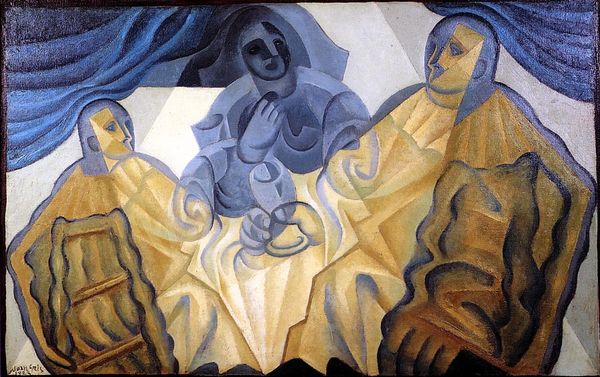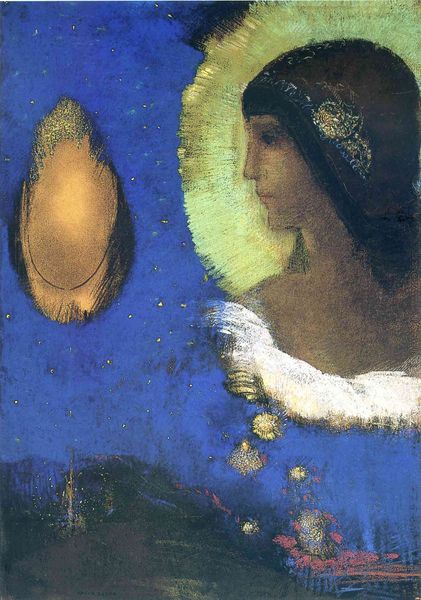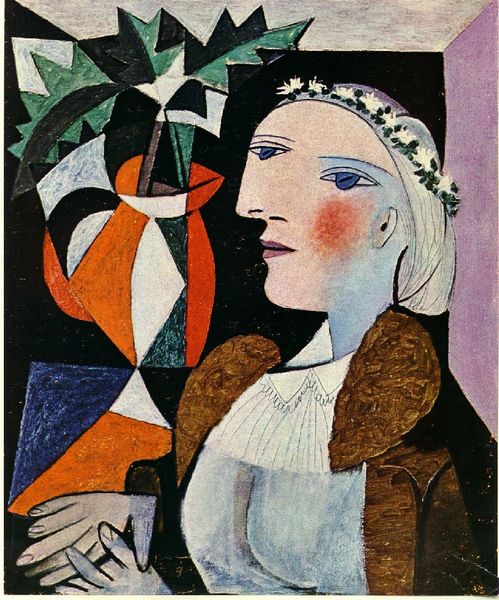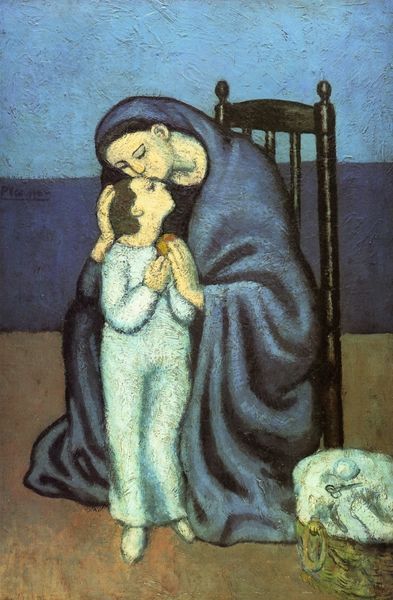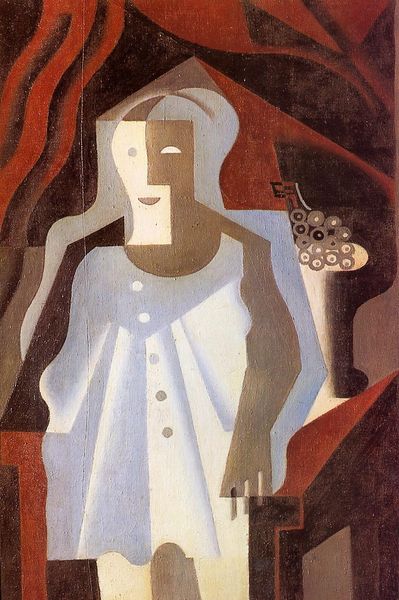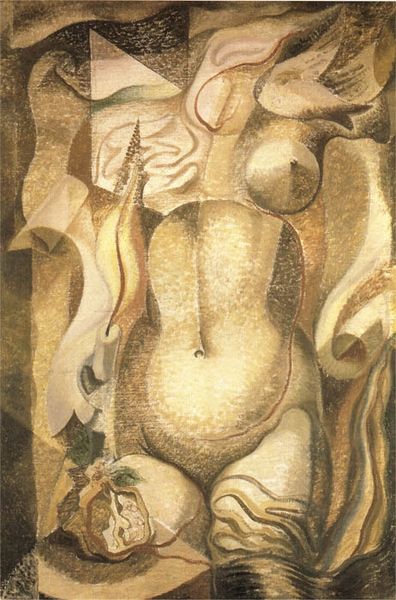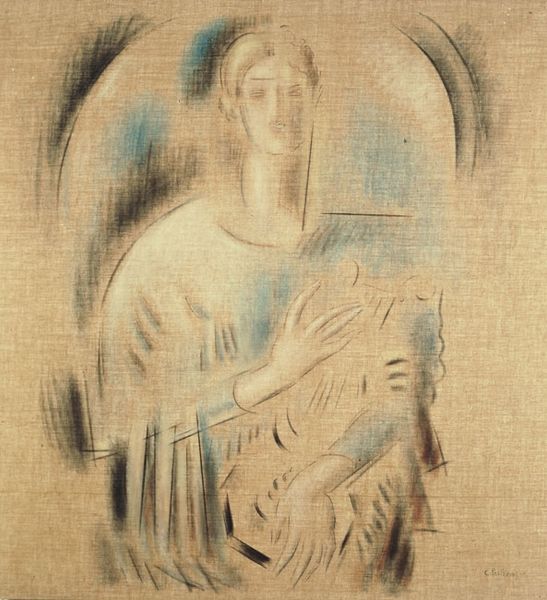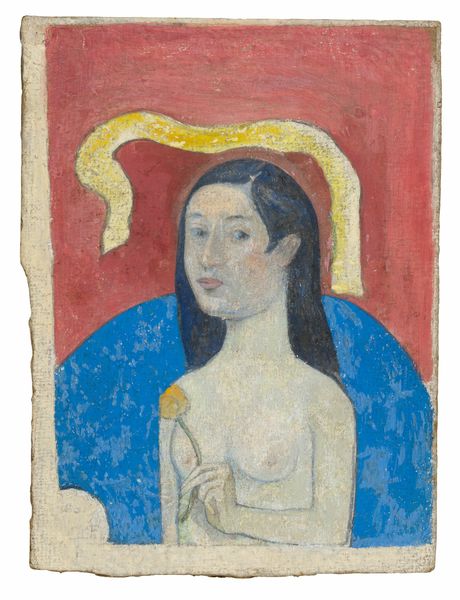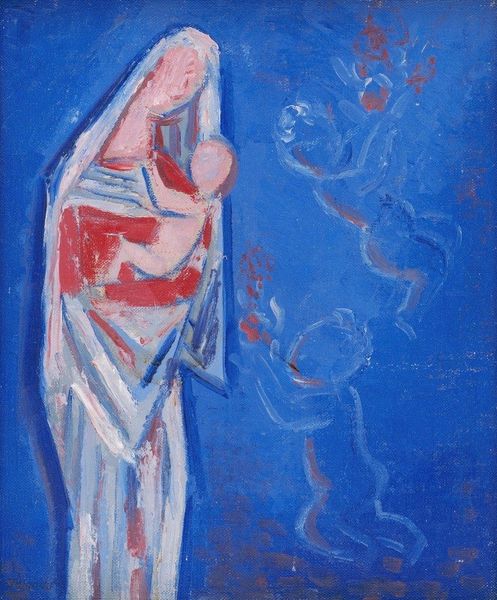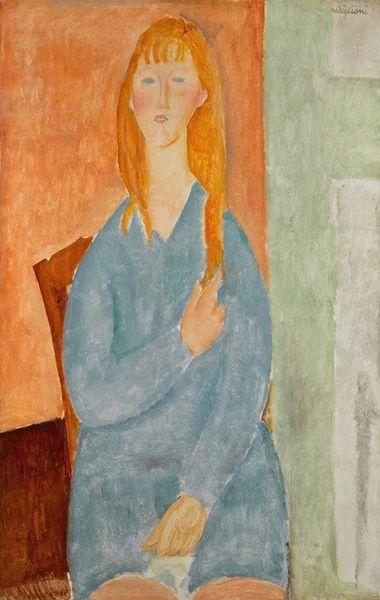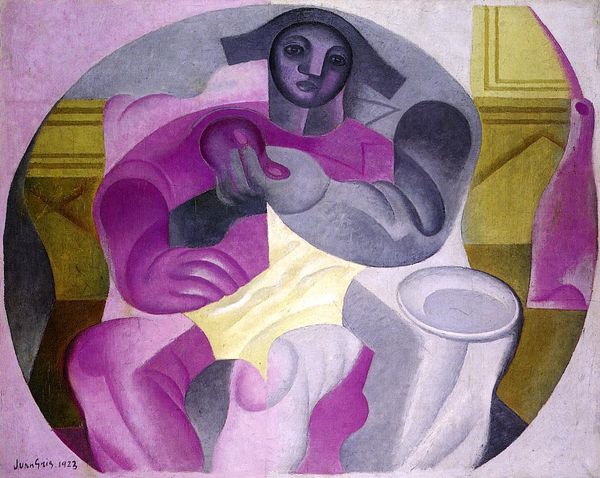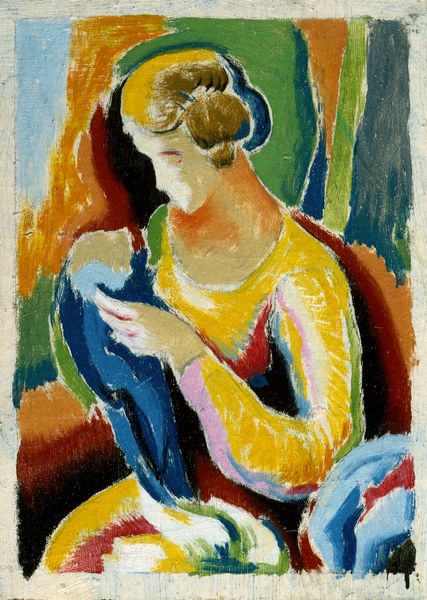
oil-paint
#
portrait
#
cubism
#
oil-paint
#
figuration
#
oil painting
Copyright: Public domain
Curator: Juan Gris created this intriguing oil painting titled “Girl”. The work seems undated, which leaves it open for broader art historical interpretation. Editor: My first impression is one of melancholic beauty. The subtle use of color and fragmented forms create an aura of fragility. The artist doesn't simply depict; he seems to analyze the figure before us. Curator: Precisely. Gris was a key figure in the development of Cubism, after all, so his engagement went far beyond pure representation. He aimed to depict objects as the mind perceives them, from multiple angles and perspectives at once. What this “Girl” offers in terms of the representation of women is a product of social constructions, cultural archetypes. Editor: Notice the way the planes intersect. Look especially at the light as it models her face, the gentle curve of her neck. The softness of the colors—lavender, pearl—creates a remarkable harmony, even within this fractured composition. Gris masterfully handles the difficult task of uniting geometry and gentle beauty. Curator: And to further build the cultural image of Cubism, these choices served a political context in which such abstraction went against the accepted Realist norm favored by dominant taste makers. This act of creation was very progressive. The audience must have questioned the conventional representations as well, I would guess. Editor: And despite the fracturing, there’s an undeniable intimacy. Look at how she clasps what appears to be drapery against her chest, creating a gesture of protectiveness or vulnerability. This intimate action gives us an invitation to imagine something real. The portrait feels immediate despite its geometrical approach. Curator: The painting really serves as an example of how artists working in Paris embraced avant-garde artistic movements while contributing to evolving discourses on identity, society, and politics. “Girl” may reflect more than an individual sitter; she’s a manifestation of modernity, filtered through personal expression and artistic exploration. Editor: I appreciate that the subdued palette actually amplifies the geometric disruptions, the way a gentle push on glass can crack it so decisively. I must admit that examining how color influences these structural features adds even more complexity. Curator: Ultimately, the act of looking critically, regardless of one’s methodological approach, contributes to the sustained cultural resonance of artwork and artist. Editor: Indeed! Examining that dynamic tension helps bring us into new visual languages that artists were pioneering during that era.
Comments
No comments
Be the first to comment and join the conversation on the ultimate creative platform.
